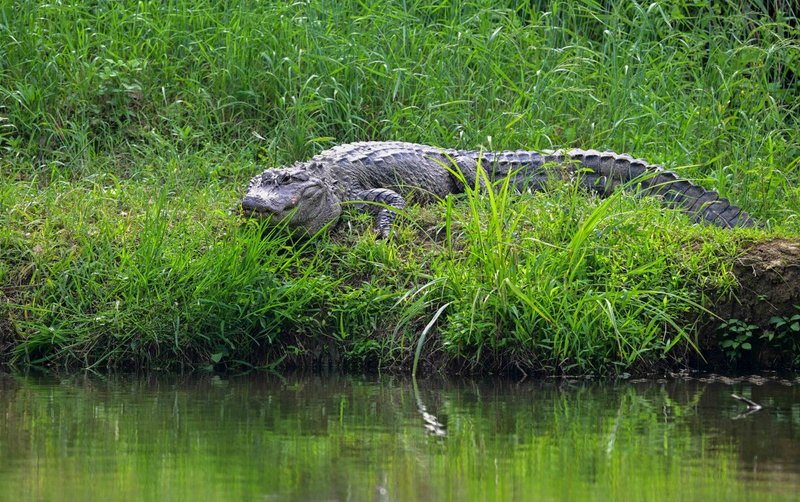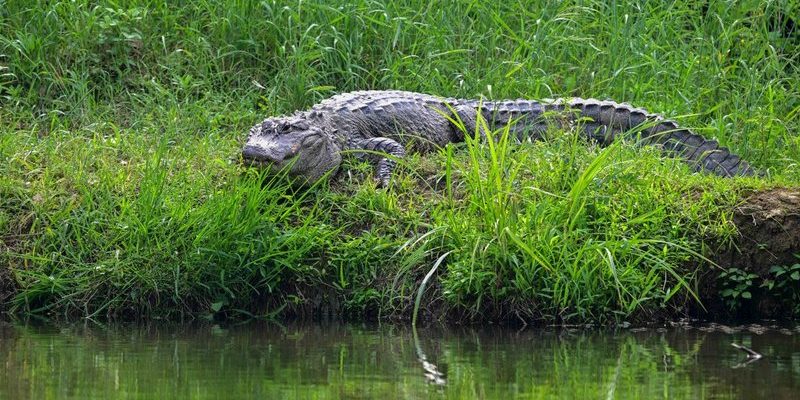
The Chinese alligator, native to the freshwater habitats of eastern China, is a classic example of evolution at work. Picture it like this: you’re trying to stay cozy in a changing climate, so you tweak your wardrobe to match what’s outside. The Chinese alligator does something similar but with its behavior and biology. Let’s dive into the fascinating world of how this unique reptile manages to thrive where conditions are anything but easy.
Understanding the Habitat of the Chinese Alligator
The Chinese alligator prefers the slow-moving rivers, lakes, and marshes of eastern China, but these locations aren’t always perfect. These wetlands can face significant changes, including seasonal floods and dry spells. You might be wondering how an alligator survives in such a fluctuating environment. Well, the answer lies in its adaptability.
During the wet season, these alligators find plenty of food and space to thrive. They hunt fish, crabs, and insects, using their strong jaws and cunning tactics. But when the water levels drop, they face a tougher challenge. The critical thing is that they can slow down their metabolism, allowing them to survive on less food until the waters rise again. Think of it as putting your body into sleep mode—just enough to get by until things improve!
In addition to food availability, the structure of their habitat plays a crucial role. The thick vegetation along the banks provides cover and nesting spots, helping them hide from predators while also laying eggs. It’s a constant balancing act between finding food, shelter, and safety in an unpredictable environment.
Unique Adaptations for Survival
Survival isn’t just about finding food; it’s also about how well you can adapt to your surroundings. The Chinese alligator comes equipped with several impressive adaptations that allow it to coexist with the challenges of its habitat.
One standout feature is its smaller size compared to other alligators. Whereas American alligators can grow over 13 feet long, the Chinese alligator typically reaches about 5 to 7 feet. This smaller stature allows them to maneuver through dense vegetation more easily. Picture trying to navigate a crowded room—being small definitely has its advantages!
Another fascinating adaptation is their thicker skin. This helps them to withstand varying temperatures and harsh environmental conditions. With their tougher skin, they can handle dry spells better, preventing dehydration during long periods without water. It’s like wearing a weatherproof jacket; you’re much more likely to stay comfortable no matter what the forecast says.
Feeding Habits and Diet
The diet of the Chinese alligator is diverse and closely tied to its environment. During their active months, they will eat a variety of prey, including fish, crustaceans, and small mammals. Their ability to hunt in shallow waters and swampy areas lets them capitalize on abundant food sources. They’re like savvy restauranteurs, knowing exactly what’s on the menu during each season.
When the waters begin to recede, hunting becomes trickier. In these times, they engage in opportunistic feeding, which means they will eat whatever is available, even scavenging if necessary. It’s a survival strategy that mirrors how some people adapt their diets based on what’s in the pantry.
The Chinese alligator also has a unique ability to remain still and camouflaged in murky waters, waiting for the perfect moment to strike. This patience pays off, as it helps them conserve energy while ensuring they can still catch meals when opportunities arise.
Reproductive Strategies
Reproduction is vital for the survival of any species, and the Chinese alligator has adapted its breeding practices to ensure the continuation of its kind. They usually nest during the warm, rainy season when conditions are just right for eggs to hatch. The female lays around 20 to 30 eggs in a nest made of plant material, which helps insulate and protect the eggs from temperature fluctuations.
After laying the eggs, the mother plays a key role in protecting them. Unlike many reptiles that abandon their nests, she stays nearby, watching over her young. This nurturing behavior is essential in a habitat where predation is a constant threat. Think about it—having your mom keep an eye on you while you try to find your footing in the world can make all the difference!
Once the eggs hatch, the mother guides her hatchlings to water, teaching them how to swim and hunt. These early experiences are crucial, giving the young alligators a better chance of survival in their challenging environment.
Threats and Conservation Efforts
Despite their unique adaptations, Chinese alligators face significant threats that jeopardize their survival. Habitat loss due to urban development, pollution, and climate change has pushed these creatures to the brink. You might wonder why the fate of these alligators matters. Well, they are a crucial part of their ecosystem, helping maintain the balance of their environment.
Conservation efforts are now underway to protect the Chinese alligator and its habitat. Organizations are working to restore wetlands, stopping pollution, and increasing awareness about the importance of preserving this species. It’s kind of like banding together with friends to save a favorite hangout from being turned into a parking lot.
Many wildlife reserves are now dedicated to the conservation of the Chinese alligator, providing a safe environment for them to thrive. With these efforts, let’s hope the future looks brighter for this unique reptile.
In a world where changes can come fast and furious, the Chinese alligator stands as a testament to nature’s incredible resilience. This remarkable reptile has adapted to thrive in harsh environments through unique behaviors and biological traits. From its smaller size allowing for better maneuverability to its varied diet and protective breeding habits, the Chinese alligator is truly an example of survival in action.
As we face our own environmental challenges, the story of the Chinese alligator serves as a reminder of the importance of adaptability and conservation. With dedicated efforts to protect their habitats, there’s still hope for this fascinating species to not only survive but thrive in the years to come. So next time you think about alligators, remember the Chinese alligator and its incredible journey through the challenges of its world.

